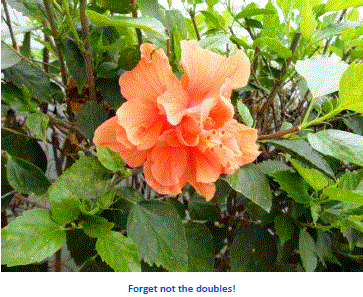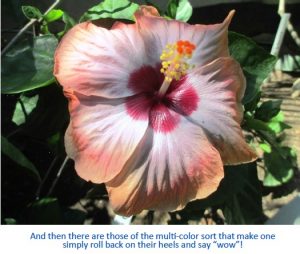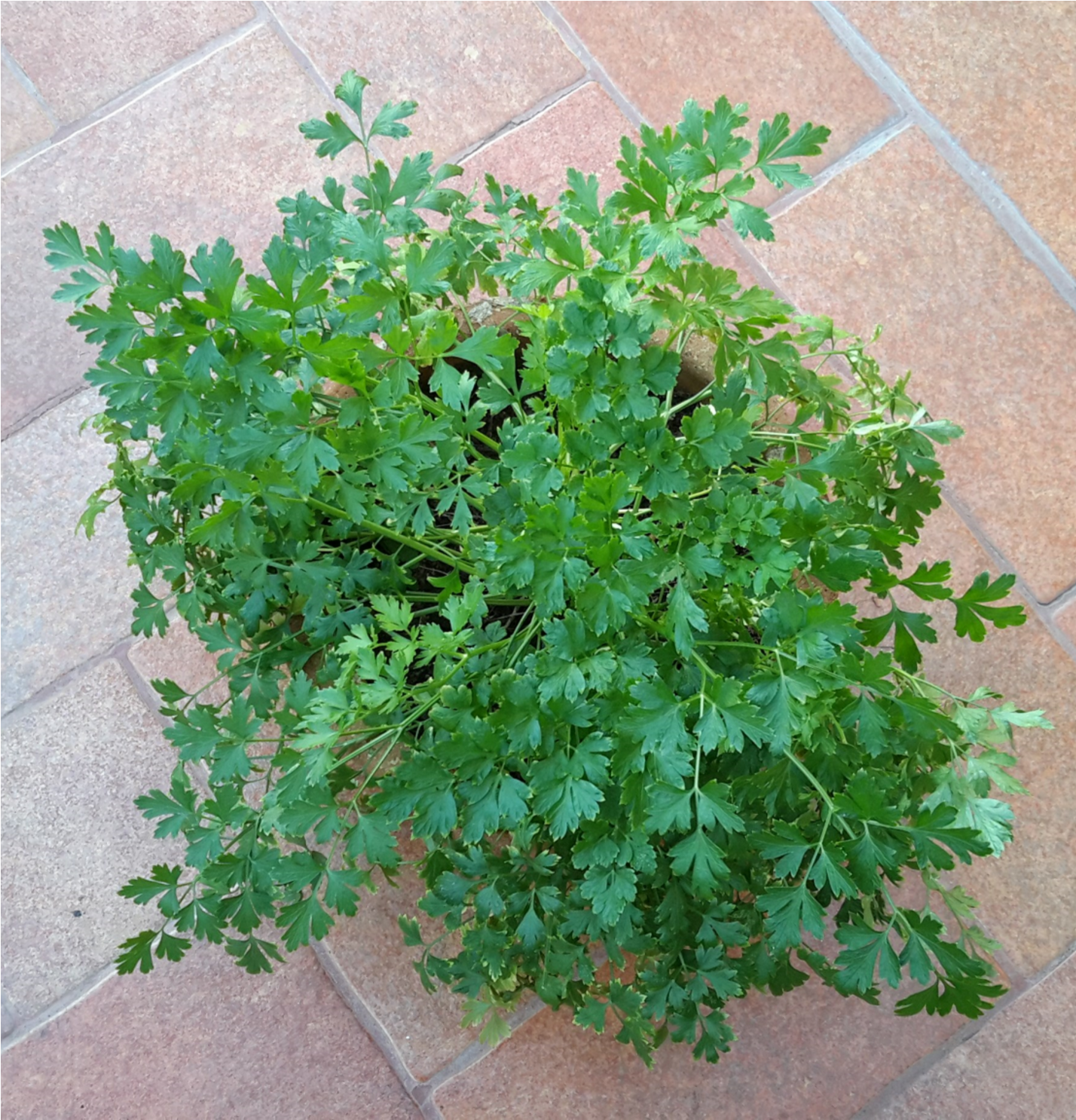By Tommy Clarkson on the July 2019 Edition
Hibiscus
Family Malvaceae
Also known as Rose Mallows
 (Regular readers of my weekly column, “Planting Roots in Mexico,” or those who’ve perused the first two volumes of our “The Civilized Jungle” series, are aware that, generally, I strive to write about specific species, not general genera somehow that sounds redundant! However, as a result of there being so many varieties in the Hibiscus genus whole plus numerous wonderful cultivars I wish, herein, to make an exception.)
(Regular readers of my weekly column, “Planting Roots in Mexico,” or those who’ve perused the first two volumes of our “The Civilized Jungle” series, are aware that, generally, I strive to write about specific species, not general genera somehow that sounds redundant! However, as a result of there being so many varieties in the Hibiscus genus whole plus numerous wonderful cultivars I wish, herein, to make an exception.)
In “Tropical Plants for Home and Garden”, William Warren succinctly encapsulates a description of Hibiscus by saying, “ If any special plant had to be selected as emblematic of the tropics, it would very likely be Hibiscus, the flowers of which brighten gardens from Bali to Florida.”
Well, bright our outdoor environs are in that we’ve a diverse array of these tropical beauties growing around Ola Brisa Gardens. So keen on them I am, it is not uncommon to hear me enthusiastically greeting them, early each morning, with a hearty “Hibiscus!” (Ok, I may have to acknowledge that I just possibly might be one flower short of a full bouquet but what self respecting gardener doesn’t talk to his or her plants?)
All told, there are somewhere between 200 to 300 different species of hibiscus plants around the world, each well, duh differing in flora size, shape, and color. While most are grown and sought for their nicely sized and quite showy flowers, some tropical tree species have stunningly attractive leaves with what Robert Lee Riffle calls a “noble stature.” Such, of the former “flora foremost” sort, are represented in the specimens of Ola Brisa Gardens, with some classics, while others are rather intriguing hybrids. But let’s commence with a bit of an overview of their greater whole. And, what need is there to rewrite information when someone else has already said it very well?
Accordingly, I wish to quote Mary Ellen, from her discussion included in “Gardening Know How,” as follows: “Among the various kinds of hibiscus plants are hardy and tropical specimens, native plants, annuals, and perennials.
There are also related plants, like hollyhock, common mallow, and even okra. Some of the main categories of hibiscus include:
“Native hibiscus: (T)here are about 35 species of hibiscus native to parts of the southeastern US. A popular native variety is the Scarlet Rose Mallow, common in Florida, which can grow to 4 to 8 feet tall (1 to 2.5 m.). Rose Mallows are also called Marsh Hibiscus and, although they naturally grow in wetlands, they will tolerate drier areas.

“Hardy hibiscus: These cold tolerant, perennial shrubs can be just as beautiful as their tropical counterparts, with big showy blooms in a range of colors. A popular hardy hibiscus variety is Rose of Sharon, with pink, white, or purple flowers.
“Tropical hibiscus: (Obviously, those with which I am most familiar and which are pictured here.) These types of hibiscus have some overlap with the native species that grow in Florida and southern Louisiana. The most common tropical hibiscus found in nurseries is Hibiscus rosasinensis. Different cultivars will give you a choice of flower color and size. They can be very large and showy, with bright and rich colors.
“Perennial hibiscus: These are shrubs, which can range from smaller, dwarf varieties to large, tree-like bushes. The perennial hibiscus may be hardy or tropical, and include Rose of Sharon, Scarlet Swamp Hibiscus, Rose Mallow, and Confederate Roses.
“Annual hibiscus: These are not true annuals, but they are tropical and can be grown as annuals in slightly cooler climates. They are often grown in containers and include Chinese and Red Leaf Hibiscus.
 The former comes with a variety of colors, while Red Leaf is grown mainly for its deep red foliage. With so many options for growing hibiscus, every gardener in every setting can find something that will grow and thrive while adding beauty to the garden.”
The former comes with a variety of colors, while Red Leaf is grown mainly for its deep red foliage. With so many options for growing hibiscus, every gardener in every setting can find something that will grow and thrive while adding beauty to the garden.”
Generally speaking, Hibiscus plants of the sort we would more generally see may grow to around fifteen feet (4.58 meters) in height in well draining soil. They like bright sun to light shade. While capable of tolerating heat and alkaline soil, they are moderately able to handle salt and drought but a bit begrudgingly!
While each single or double flower lasts but a single day, a healthy plant will bloom year around. Beyond the obvious simple enjoyment of their somewhat exotic looking flowers, they may be employed as an accent, hedge, screen or attractive background plant.
The full edition or view it online
—
Tommy Clarkson is a bit of a renaissance man. He’s lived and worked in locales as disparate as the 1.2 square mile island of Kwajalein to war-torn Iraq, from aboard he and Patty’s boat berthed out of Sea Bright, NJ to Thailand, Germany, Hawaii and Viet Nam; He’s taught classes and courses on creative writing and mass communications from the elementary grades to graduate level; He’s spoken to a wide array of meetings, conferences and assemblages on topics as varied as Buddhism, strategic marketing and tropical plants; In the latter category he and Patty’s recently book, “The Civilized Jungle” – written for the lay gardener – has been heralded as “the best tropical plant book in the last ten years”; And, according to Trip Advisor, their spectacular tropical creation – Ola Brisa Gardens – is the “Number One Tour destination in Manzanillo”.



